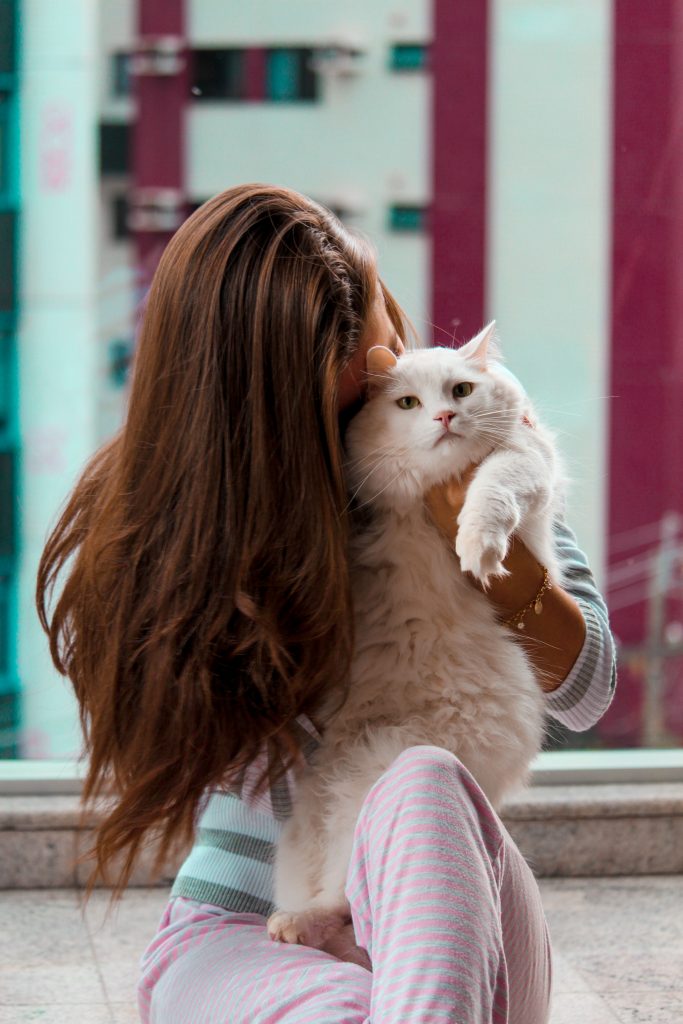Are you dreaming about a cat, but are you afraid that the company of the animal may make you allergic? There’s no need to worry, because the percentage of people allergic to pets is really low, but if you’re unfortunately in this group – there are ways to be able to enjoy cat’s company despite allergies. Read on to find out if hypoallergenic cats really exist.

Numbers don’t lie
Some time ago, we’ve posted about “allergy to cats” (you could read it on our Facebook page). We found the results of the American College of Allergy research, which estimates that only 10% of the population is allergic to pets. Interestingly, cats are more likely to cause allergic reactions than dogs.
People who are among the unfortunate 10% and know that they suffer from an allergy or suspect that they or someone in their family can be allergic (company of a cat causes sneezing, tearing, coughing and sometimes even breathlessness) should consider cat breeds, which are “hypoallergenic” in some way. What does it actually mean?
Allergy caused by cats
The allergy to cats is caused by specific proteins. We are talking about two types: Fel d1, which is found on cat’s skin, and Fel d4 – in cat’s saliva. Allergens move along with the daily care (the cat, by licking the fur, transfers the Fel d4 protein to the skin, and vice versa – Fel d1 goes to the saliva). During periods of cat moulting, the allergens are spread with the hair throughout the house, which in an allergic person may aggravate the symptoms of allergy.
Interesting fact:
Cats also produce another protein with sensitizing properties: Fel d2, which isn’t as invasive as Fel d1, but can also cause allergic reactions in some people. Protein is found in the urine of a cat, so symptoms of allergy may appear, for example, when cleaning the litter box.
Even if there’s no cat that would not produce any of these proteins at all, there are breeds that produce a different amount of these allergens, so it may turn out that a person with an allergy will react differently, for example, to a maine coon, or devon rex. In practice, this means that in principle no cat breed can be considered completely “hypoallergenic”, and even the hairless sphinx can be a transmitter of the allergen, and therefore a potential source of allergy.
Breeds with fewer allergens
Although there’s no cat that would not produce Fel d1 and d4 proteins, there are breeds with lower amount of allergens. We’ve made a list of breeds, which may be a hope for everyone who would like their own cat, but due to allergies cannot consider such a scenario.
Important: there’s no 100% guarantee that contact with such a cat will not result in symptoms typical of allergies – the best way to find out is to check the body’s reactions, having the cat around.
1. Balinese cat
Balinese’s hair looks like a luxurious fur, which is why it’s sometimes called “longhaired Siam”. Doesn’t that mean that people who are easily allergic should stay away from such breeds? Contrary to popular belief that longhair cats are the most allergenic, this cat may be suitable for someone with allergies as it produces less Fel d1 protein than other breeds, making it less allergenic.
2. Russian blue
Here we have a similar situation as in the case of Balinese cats. Silky and “plush” to the touch, Russian blue cats also, despite their impressive fur, produce less Fel d1 protein, so they may be suitable for people with a tendency to allergies.
3. Bengal cat
Bengal’s hair is very delicate and requires much less care than other cats. Due to the fact that representatives of this breed spend less time licking their hair, their saliva and fur are less prone to spreading, so this cat can be completely non-invasive for people who show symptoms of allergy to cats.
4. Devon rex
Devon rexes have a short, soft, curly coat with frequent furless spots, which is considered as normal for this breed. Due to its specific fur, the devon rex doesn’t lose as much hair as other members of the same species, and this also means less distribution of allergenic proteins.
5. Oriental cat
There are over 300 different varieties among oriental cats, and although they differ in the color of their fur, they all have very short and fine hair. Many people with allergies to cats respond very well to representatives of this breed, and regular grooming, apart from keeping the coat in check, minimizes the risk of spreading allergens.
6. Siberian cat
This is another cat that, despite its long hair, produces less Fel d1 protein, so that contact with this cat doesn’t cause such strong allergic reactions as in the case of other cats. A Siberian is a dream come true for people with a tendency to allergies but who want long-haired furry in the truest sense.
7. LaPerm
LaPerm is a unique cat breed with a curly coat that doesn’t spread around the home as easily as it does with other furries. Less hair equates to less allergens, which makes this breed suitable for people who tend to react strongly to cat allergens.
8. Sphinx
You might think that the sphinx – since it has no hair at all – poses no threat to allergy sufferers. This isn’t quite the case, as we already explained in the first part of the article. However, his “nudity” will definitely be important when choosing a cat as it is associated with minimizing the risk of allergy. Due to the fact that sphinxes don’t have hair, the amount of allergens will be negligible, although it must be remembered that even in these cats, the Fel d1 protein is present in a small quantity.
If you managed to read through to the end, you already know that a truly “hypoallergenic” cat doesn’t exist, and the title of the article, although quite tricky, was a savvy move used in good – educational! – intention. Let us know if you have or have been dealing with an allergy caused by cats and know how to avoid its symptoms. Your advice will be valuable both to us and the entire myKotty’s community!




